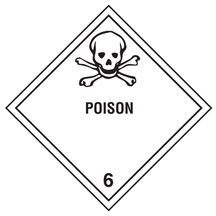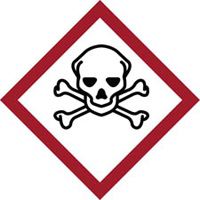| The Home page of ILPI's Safety Data Sheet (SDS) Resource, the leader in SDS information since 1995! | |
| The history and philosophy behind this resource. | |
| A curated collection of books and reference materials concerning Safety Data Sheets and closely related topics. | |
| Paste your plain text SDS into the SDS-Demystifier, and it will be converted into a hypertext-enriched document with links to detailed explanations of each key term. | |
| An extensive list of frequently asked questions about Safety Data Sheets including regulations, content, compliance, and more. | |
| A humorous take on Safety Data Sheet jargon. Fill in the blanks on our entry form to generate a personalized Unsafety Data Sheet to share with your coworkers. | |
| Since 1995, we've maintained this massive curated list of the best places to find Safety Data Sheets on the Internet. | |
| You are here! Way more than a glossary, this hypertext-enhanced resource covers hundreds of SDS-related terms and expert knowledge. Each entry includes both the SDS relevance and links to additional authoritative resources. | |
| Archived results of Safety Data Sheet related polls taken by some of our millions of site visitors | |
| The OSHA regulations behind SDS regulations, including the inspection guidelines and over 400 official interpretations letters under the Hazard Communication Standard | |
| Commercial suppliers of SDS authoring and management software as well as cloud compliance services. | |
| Commercial companies that will create SDS's for your specific needs as well as SDS translation companies. |

Safety signs, banners, and scoreboards? Get yours at Safety Emporium!

Be sure you're in compliance with DOT placards and labels from Safety Emporium.
Definition
A cyanide is a chemical compound that contains a cyano functional group, CN-. A chemist would say that the cyanide ion has a single negative charge and consists of a carbon atom that is triply bonded to a nitrogen atom, -C≡N:.
Cyanide is often used a shorthand term for hydrogen cyanide, HCN, also called hydrocyanic acid, a highly toxic gas and the simplest example of a cyanide compound.
Nitriles are organic compounds that contain a cyanide unit. These have the generic chemical formula RCN (where R = an organic group) and are sometimes referred to as organic cyanides.
Isonitriles, isocyanates, and isocyanides all have CN subunits in them, but are not considered cyanides because of the way that they bond to other atoms and their correspondingly different chemical reactivity.
Additional Information
The free cyanide anion, CN-, in
Exposure to 300 ppm of hydrogen cyanide by inhalation can be fatal within minutes and lower doses can endanger life. The high toxicity of HCN was once exploited for the execution of prisoners in several US states; the HCN was generated as needed by dropping NaCN (sodium cyanide) into a solution of sulfuric acid. See the last link under Additional Reading (below) for more information.

Bring it all together with laboratory lattice frames and connectors from Safety Emporium.
Ingestion of 100 to 250 milligrams of NaCN or KCN (potassium cyanide) can also be fatal as can absorption thorough injured skin. Solutions of sodium or potassium cyanide are extremely basic; the pH of a 0.1 M solution is approximately 11, meaning that it is quite corrosive.
At low doses, your body can cope with minute amounts of cyanide (it occurs naturally in certain foods, albeit in small amounts), but a "large" sudden dose (acute exposure) poses a serious medical emergency. Antidotes for cyanide poisoning include amyl nitrate, sodium nitrite, and intravenous sodium thiosulfate. These can be quite effective if administered promptly by a trained medical professional.
Cyanides which exist as simple salts (i.e they dissolve in water to form cyanide ions) usually contain the word "cyanide" as the last word in their name; for example, sodium cyanide (NaCN). When the CN- group is part of a nitrile molecule, the name will generally contain the prefix cyano- or the suffixes -nitrile, -onitrile or carbonitrile. Nitriles are usually less toxic than cyanide salts, although they may contain some of the latter as impurities. Aliphatic nitriles can be metabolized to the free cyanide ion, making them generally more toxic than arylnitriles which are stable in the body.
The cyanide unit occurs in other compounds such as cyanamide (carbodiimide, H2NC≡N), cyanoacetic acid (malonic mononitrile, N≡CH2COOH), potassium ferricyanide (K3[Fe(CN)6]) and potassium ferrocyanide (K4[Fe(CN)6]), however these compounds do not release cyanide and are therefore much less toxic than simple cyanide salts or many nitriles.

Your employees can stay informed and comply with OSHA regulations with SDS information stations and compliance products from Safety Emporium.
Cyanide salts and hydrogen cyanide are widely in industry. For example, through a process called hydrocyanation, HCN reacts with 1,4-butadiene (an alkene) to form adiponitrile (1,4-dicyanobutane, hexanedinitrile, tetramethylene cyanide, NC(CH2)4CN), a chemical precursor to hexamethylene diamine (1,6-diaminohexane, H2N(CH2)6NH2), which is one of the polymers used to make nylon.
A major use of cyanide salts is in gold mining. Crushed ore is sprayed with an aqueous solution of sodium cyanide, NaCN. The cyanide ion has a very high affinity for gold (Au) atoms and reacts to form the stable and soluble Au(CN)2- anion:
4 Au(s) + 8 CN-(aq) + O2(g) + 2 H2O(l)  4 Au(CN)2-(aq) + 4 OH-(aq)
4 Au(CN)2-(aq) + 4 OH-(aq)
The gold-containing solution is easily separated from the insoluble ore and recovered as solid gold (along with other valuable metals...as well as some toxic heavy metals) by reducing the dissolved metal complexes with zinc powder:
2 Au(CN)2-(aq) + Zn(s)  Zn(CN)42-(aq) + 2 Au(s)
Zn(CN)42-(aq) + 2 Au(s)
This process is done commercially on a millions of tons scale and is a major source of water pollution. There have been multiple cases where millions of gallons of cyanide-contaminated water have breached containment dams and poisoned wide areas.
SDS Relevance
Cyanides usually appear on a Safety Data Sheet in the context of incompatible materials. In general, cyanides are incompatible with acids, including even weak acids such as carboxylic acids and carbon dioxide, forming highly toxic HCN gas on contact. Cyanide salts are also generally incompatible with alkaloids, chloral hydrate, iodine, metallic salts, permanganates, chlorates and peroxides.
HCN is also produced when nitrogen-containing chemicals are burned. Therefore, the SDS may warn about HCN as well as carbon monoxide as toxic byproducts of combustion.
Hydrogen cyanide gas (HCN) has a characteristic odor of almonds, although not all people are able to detect this odor. Facilities utilizing HCN or with the potential to accidentally produce HCN should not rely on odor alone to warn of dangerous levels. The first link under Further Reading (below) has a detailed summary of precautions that industrial facilities should utilize if they handle HCN or cyanide salts.
Any work involving HCN or cyanide salts should only be conducted with rigorous training, written procedures, proper engineering controls, predefined emergency procedures, an evacuation plan, and first aid training.

Get your GHS-compliant labels and signs from Safety Emporium.
Further Reading
- Antidotes For Poisoning By Cyanide by the International Programme on Chemical Safety.
- New Jersey has a Hazardous Substance Fact Sheet on Hydrogen Cyanide full of useful information.
- Australia's National Occupational Health and Safety Commission has a Cyanide Poisoning Guide available.
- Cyanide Poisoning at eMedicineHealth.
- IUPAC nomenclature (naming) rules for nitriles, isocyanides and related compounds courtesy of ACD Labs.
- The Agency for Toxic Substances and Disease Registry has a ToxFAQ for cyanide (also available in Spanish)
- Cyanide Hazards to Plants and Animals from Gold Mining and Related Water Issues from Rev Environ Contam Toxicol 2004, 183, 21-54.
- Cyanides Standard Operating Procedures (SOP) Template at Boston University.
See also: amine, carboxylic acid, cyanosis, nitrile, volatility.